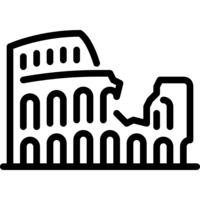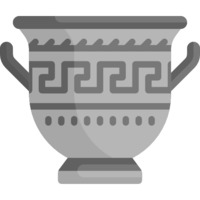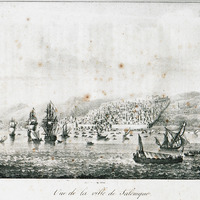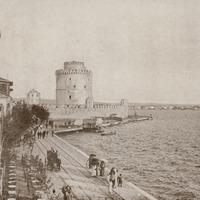Ρωμαϊκή αγορά
Αντικείμενο
Τίτλος Σημείου Ενδιαφέροντος
el
Ρωμαϊκή αγορά
en
Roman market
Περιγραφή / Απόσπασμα
53
en
Au centre de la rue triomphale, on voit encore debout, et sur une même ligne, cinq colonnes d'ordre corinthien, en marbre blanc, veiné de bleu ; elles figurent sur deux faces, et portent un entablement des deux côtés . Au-dessus des colonnes, en de hors et en dedans, s'élèvent des pilastresde huit à neuf pieds de haut,de marbre blanc uni, sur lesquels sont sculptés des bas-reliefs plus saillans que le champ du pilastre, et d'un beau travail. Ilsreprésententdes figureshumainesà-peu-prèsgrandes comme nature.
Σύγχρονη περιγραφή
el
Η Ρωμαϊκή Αγορά της Θεσσαλονίκης, που για τρεις περίπου αιώνες αποτέλεσε κύριο σημείο αναφοράς της πόλης, καθώς και διοικητικό κέντρο, ανεγέρθηκε στη Θεσσαλονίκη κατά το τέλος του 2ου αι. και το πρώτο τρίτο του 3ου αι. μ.Χ. Χτίστηκε ως κάτι αντίστοιχο προς την ελληνική Αγορά, με αρχέτυπο όμως το κέντρο της Ρώμης. Την ίδια εποχή διαμορφώθηκαν πανομοιότυπες αγορές σε όλη τη Ρωμαϊκή αυτοκρατορία. Κατά την παλαιοχριστιανική περίοδο το συγκρότημα της Ρωμαϊκής Αγοράς υπέστη αλλαγές, διατήρησε ωστόσο κάποιες από τις λειτουργίες του σαν κοινωνικό κέντρο της πόλης.
en
The Roman Agora of Thessaloniki, which for about three centuries was the main point of reference of the city, as well as an administrative center, was built in Thessaloniki at the end of the 2nd century. and the first third of the 3rd c. A.D. It was built as something similar to the Greek Agora, but with an archetype in the center of Rome. At the same time, identical markets were formed throughout the Roman Empire. During the early Christian period the complex of the Roman Agora underwent changes, but retained some of its functions as a social center of the city.
Τύπος μνημείου
Χρονολογία μνημείου
el
2ος αιώνας
en
2nd century





